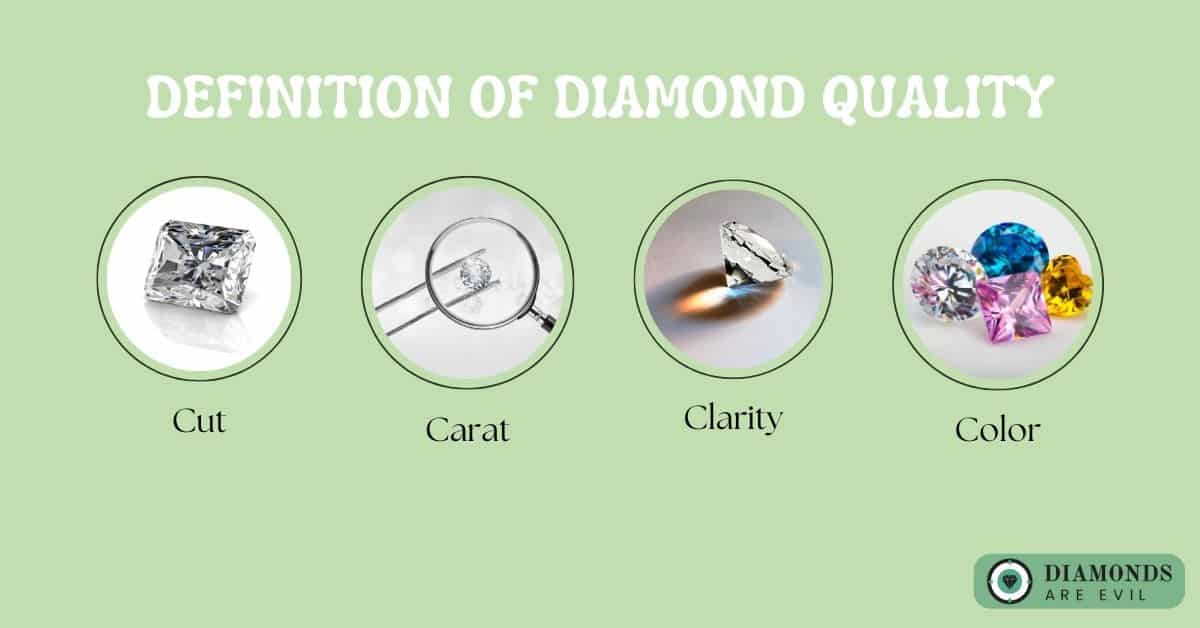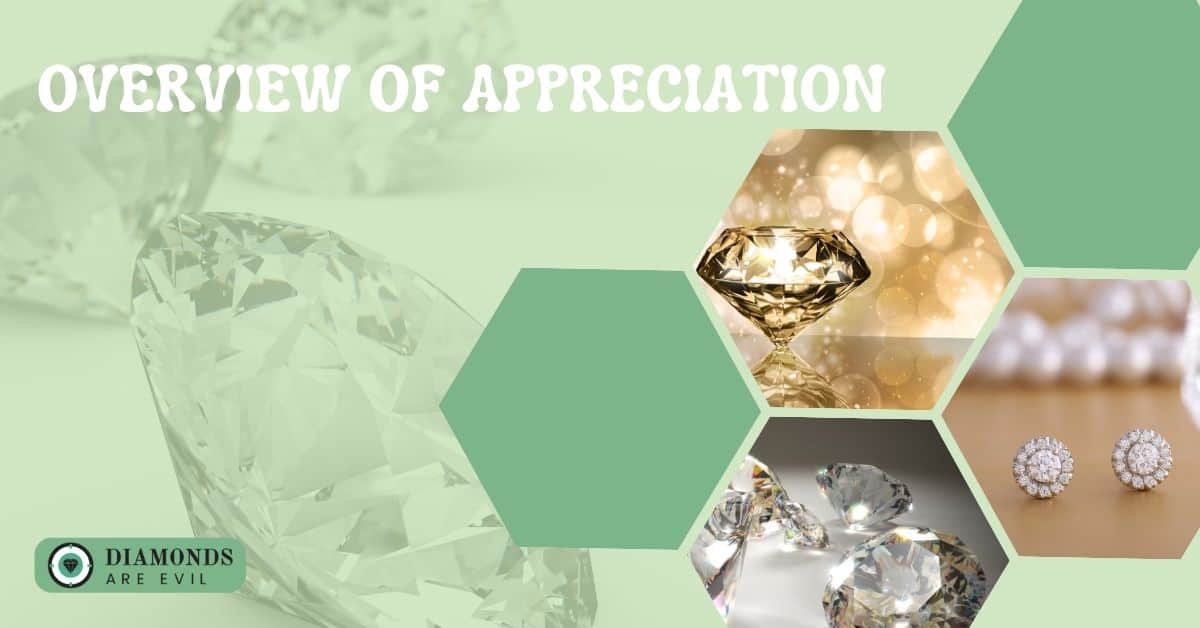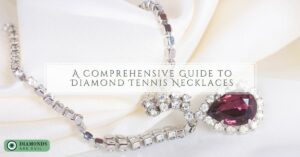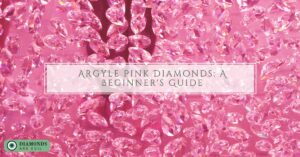The quality of a diamond is one of the most important factors in determining its value and appreciation over time. A high-quality diamond will have a good cut, a large carat weight, high clarity with minimal inclusions, and a desirable color (such as near-colorless). As a result, these diamonds will typically hold their value and appreciate over time, making them a good investment for those interested in buying diamond jewelry.
When it comes to diamond quality, there’s a lot more to consider than simply cut, color and clarity. If you’re considering investing in diamonds for their potential appreciation. Understanding the relationship between diamond quality and appreciation is essential for making smart decisions. Factors such as certification reports, carat weight, fluorescence and symmetry can all have an impact on the future resale value of a diamond. In this blog, we will explore the relationship between diamond quality and appreciation in order to help you make informed investment decisions.
Definition of Diamond Quality
Diamond quality refers to the various factors that determine the value and beauty of a diamond. It is evaluated based on the “Four Cs”: Cut, Carat weight, Clarity, and Color.
- Cut refers to the diamond’s symmetry, proportion, and finish. It affects its ability to reflect light and sparkle. A well-cut diamond will have a good balance of brightness, fire, and scintillation.
- Carat weight measures the size of a diamond and is a significant factor in its price. Larger diamonds are generally more valuable. But other factors such as cut, clarity, and color also play a role.
- Clarity measures the presence of internal and external inclusions and blemishes. It’s rated on a scale from included to flawless. A diamond with high clarity will have fewer inclusions, making it appear clearer and brighter.
- Color is evaluated based on the presence of any hue or tint in the diamond. The most valuable diamonds are those that are near colorless. While diamonds with a strong hue will be less valuable.
A diamond’s overall quality is determined by the combination of these Four Cs and their relative balance. A high-quality diamond will have an excellent cut, a large carat weight, high clarity, and desirable color, making it more valuable and likely to appreciate over time.
Overview of Appreciation
Appreciation refers to the increase in the value of an asset over time. In the context of diamonds, appreciation refers to the growth in the value of a diamond. Due to various factors such as supply and demand, rarity, and market conditions.
A diamond’s appreciation is largely dependent on its quality. As determined by the Four Cs (Cut, Carat weight, Clarity, and Color). High-quality diamonds with excellent cut, large carat weight, high clarity, and desirable color. Are generally more valuable and tend to appreciate more over time.
The diamond market is also influenced by global economic conditions, changes in consumer demand, and the discovery of new diamond mines. When the demand for diamonds is high and the supply is limited. The prices of diamonds tend to increase, leading to appreciation.
Additionally, diamonds are considered rare or unique. Such as those with a high level of clarity or an unusual color, may appreciate faster than other diamonds.
Factors Affecting Diamond Quality
Diamond quality is influenced by several factors, including the Four Cs (Cut, Carat weight, Clarity, and Color) as well as other factors such as the diamond’s origin and treatment history.
| The Four Cs | As mentioned, the Four Cs are the primary determinants of a diamond’s quality and value. A diamond with excellent cut, large carat weight, high clarity, and the desirable color is considered high quality and will typically be more valuable. |
| Origin | Diamonds can be sourced from various locations around the world, and the origin of a diamond can affect its quality. Diamonds from some regions may be more prone to inclusions or have a unique color, while others may be considered rarer and therefore more valuable. |
| Treatment History | Some diamonds may have undergone treatments to improve their appearance, such as laser drilling to remove inclusions or high-pressure high-temperature (HPHT) processing to change the diamond’s color. Diamonds that have been treated may be considered lower quality and may have a lower resale value. |
| Shape and Cut Style | The shape and cut style of a diamond can also affect its quality. Round brilliant cut diamonds, for example, are typically more valuable than other shapes due to their popularity and the fact that they maximize the diamond’s brilliance and fire. |
| Market Trends | The diamond market is subject to fluctuations, and changes in consumer demand, economic conditions, and other factors can influence the value of diamonds. A diamond that is in high demand may appreciate in value, while a diamond that is less popular may decrease in value. |
Relationship Between Diamond Quality and Appreciation
The relationship between diamond quality and appreciation is a close one. With diamond quality playing a major role in determining a diamond’s value and potential for appreciation.
Diamonds that are of high quality, as determined by the Four Cs (Cut, Carat weight, Clarity, and Color). Tend to be more valuable and hold their value better over time. A diamond with excellent cut, large carat weight, high clarity, and the desired color is considered high quality and is likely to appreciate in value.
On the other hand, diamonds that are of lower quality, such as those with a poor cut, low clarity, or undesirable color, may decrease in value over time and may not appreciate as much as high-quality diamonds.
Additionally, the diamond market is subject to fluctuations, and changes in consumer demand, economic conditions, and other factors can influence the value of diamonds. When the demand for diamonds is high and the supply is limited, the prices of diamonds tend to increase, leading to appreciation.
However, when the demand for diamonds decreases, the prices may decrease as well, potentially affecting the appreciation of lower-quality diamonds more than high-quality diamonds.
In conclusion
Diamond quality is an important factor in determining the value of a diamond and its potential for appreciation. High-quality diamonds with excellent cut, large carat weight, high clarity, and desirable color are generally more valuable and tend to appreciate over time.
Additionally, market trends such as changes in consumer demand or economic conditions can also affect the value and appreciation of diamonds. It is important to consider all of these factors when evaluating a diamond’s quality and potential for appreciation.










